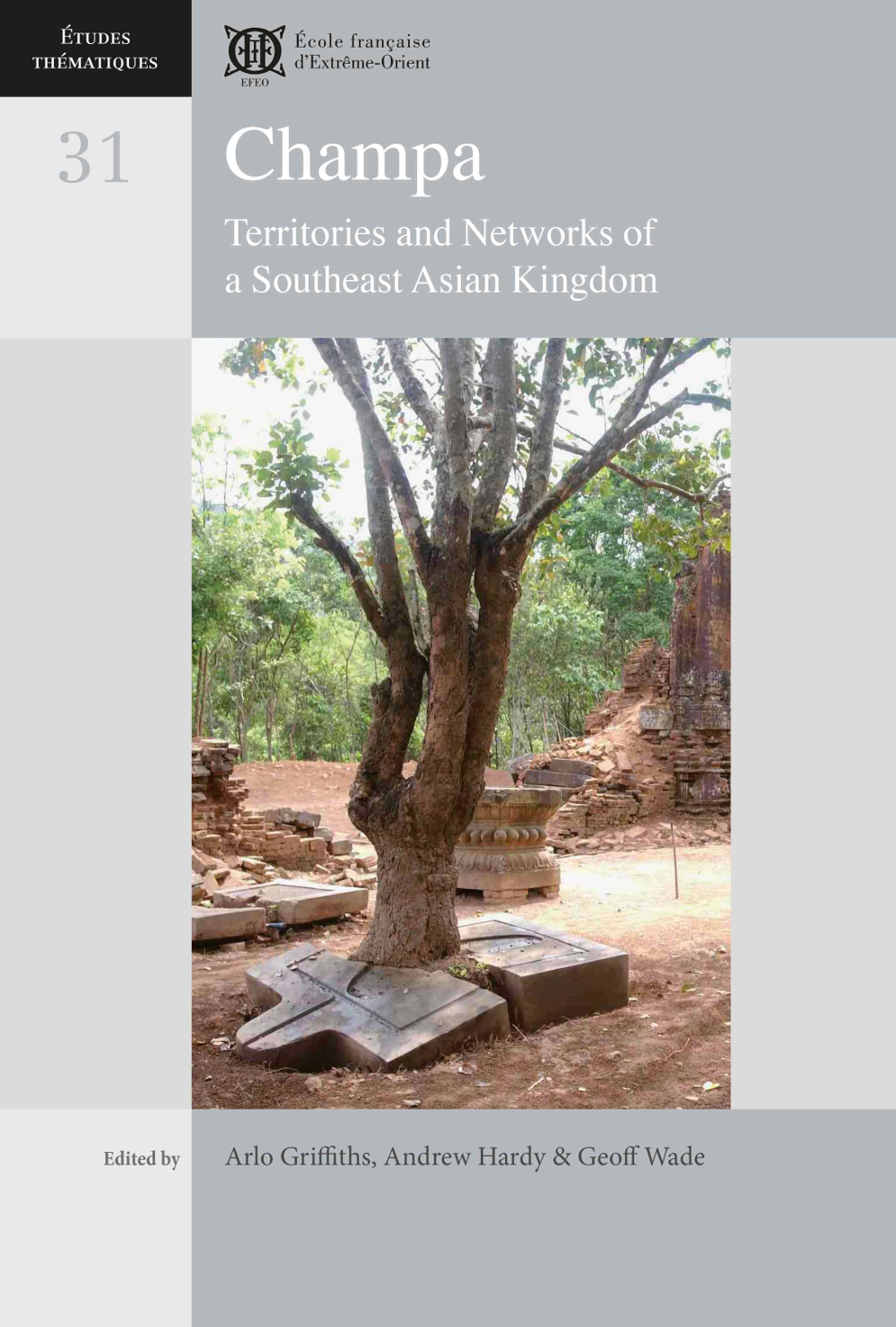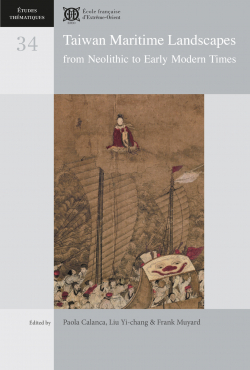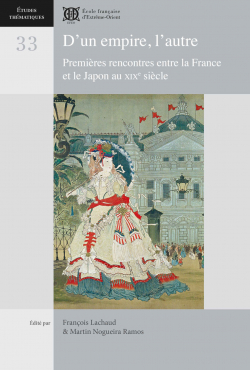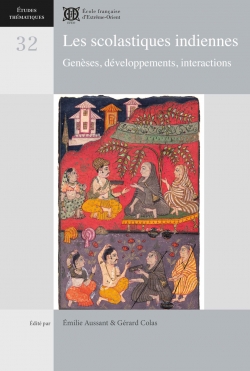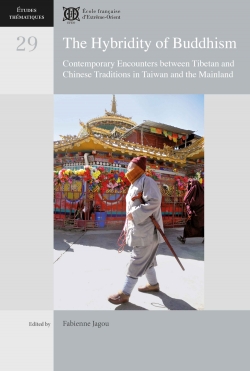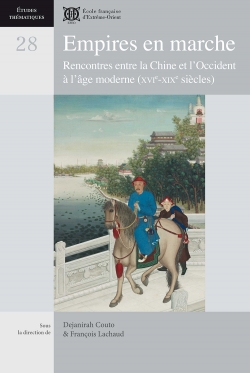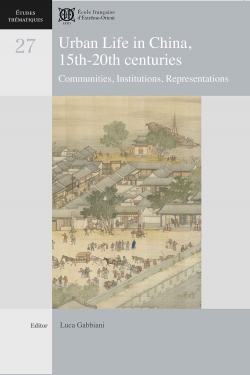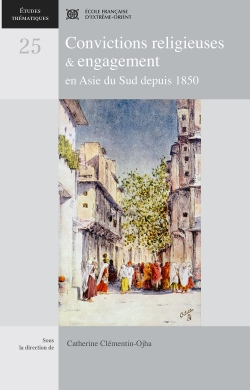The catalog of EFEO Publications includes works on a wide range of disciplines in the humanities and social sciences (archaeology, history, anthropology, literature, philology, etc.), centered on Asia, from India to Japan.
These publications address both specialists, and a wider public interested in Asian civilizations and societies.
Champa
Territories and Networks of a Southeast Asian Kingdom
Collection : Études thématiques
Collection's number: 31
Editor: Griffiths (Arlo), Hardy (Andrew), Wade (Geoff)
Edition: EFEO
Publication date: 2019
Status : Available
40,00 €
ISBN-13 : 9782855392691
ISSN : 1269-8067
Width : 27.5 cm
Height : 18.5 cm
Weight : 1.34 kg
Number of pages : 448
Distributor : EFEO Diffusion
Geography : Vietnam, Champa
Language : English
Place : Paris
Support : Papier
Description :
18.5 x 27.5 cm, 448 p., Ill., Maps, English
Abstract
In the past quarter century, Champa scholarship has been seeking ways out of the interpretative framework inherited from Georges Maspero’s Le royaume de Champa, which portrayed Champa as a unitary king-dom of provinces ruled by “absolute” kings. Scholars have since been working to revise this portrait, to de-velop new thinking about the way the kingdom and its territories were structured, and also to critique Mas-pero’s decision to end his history of Champa with the 1471 capture of the Chà Bàn citadel and fall of Vijaya. Much new data has been produced in recent decades, thanks especially to the access to Champa field sites enjoyed since the 1990s by international scholars under Vietnam’s open door policy, and to the resources for research and discussion now available to Vietnamese scholars. Several long-term joint projects have, more-over, brought Vietnamese and overseas expertise to bear on archaeological sites or collections of docu-ments related to Champa.
The production of knowledge about Champa is thus thriving. The result is an incremental, multi-disciplinary mosaic of information on Champa’s past. Some of this scholarship was published in two recent volumes: Champa and the Archaeology of Mỹ Sơn (Hardy et al. 2009) and The Cham of Vietnam (Trần Kỳ Phương & Lockhart 2011). The present volume stands in the same tradition, as a book of ground-breaking data that contributes to the renewal of Cham-pa studies.
As these data are gradually sorted, new patterns that transform our understanding of Champa are be-coming discernible. One of the most striking pertains to maps. This book offers a new framework for gen-eral discussion of Champa’s space, and several new maps that amount to a template for cartographical rep-resentations of the kingdom and its territories at spe-cific historical moments. Another contribution of this volume is the publication of new data that yield ground-breaking insights into the nature of Champa’s presence in the highlands.
Part I of the book focuses on the territories that constituted Champa, making use of data from recent excavations, archaeological and ethnographic surveys, inscriptions, and Cham-language manuscripts from the post-1471 period.
In Part II, we turn to Champa as a kingdom, using data from epigraphy and Vietnamese chronicles, but also from architectural-archaeological study of a royal temple foundation at Mỹ Sơn. Three authors present new data and analysis of the Champa kingdom in the 15th century, grappling with the issue of the king-dom’s tendency toward fragmentation and eventual decline.
Part III focusses on the regional connectedness of Champa. These include diplomatic and cultural ex-changes with China and India, artistic and trading rela-tions with mainland Southeast Asian countries, and language links with the Malay World.
Table of contents
About the collection
Études thématiques
Authors who would like to submit drafts are asked to follow these instructions, download : Feuille de style [PDF 602 Ko].
About the editor
Griffiths (Arlo)
New York, 1976
EFEO member since 2008
Arlo Griffiths, whose work combines philological and epigraphical investigation of the past, is professor of Southeast Asian history at the EFEO. He was posted at the EFEO’s Jakarta Centre from 2009 through 2014, and now teaches at the EPHE in Paris.
Hardy (Andrew)
Andrew Hardy is professor of Vietnamese history at the EFEO and head of its centre in Hanoi, where he studies Vietnamese migration, the history of Champa and ethnic relations in Southeast Asia.
Wade (Geoff)
Geoff Wade researches Asian connections and interactions, historical and contemporary. After holding academic positions in Hong Kong (1996–2002) and Singapore (2002–2013), he is currently Canberra-based, researching China’s burgeoning relations with Southeast Asia, Australasia and the Pacific.
Related books
Études thématiques
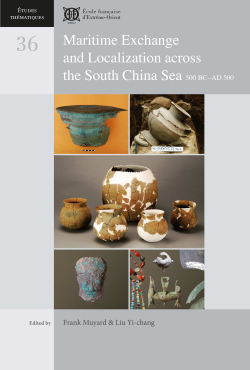
Maritime Exchange and Localization across the South China Sea
Bérénice BELLINA, Aude FAVEREAU, LÂM Thị Mỹ Dung, YAMAGATA Mariko, Frank MUYARD, LIU Yi-chang, Krisztina KINGA HOPPÁL, Stephen CHIA MING SOON, SHIUNG Chung-ching, MIYAMA Emily, CHAO Chin-yung, CHUNG Kuo-feng, WANG Kuan-Wen, Caroline JACKSON, LIU Jiun-Yu
40,00 €
2025
• Available
Études thématiques
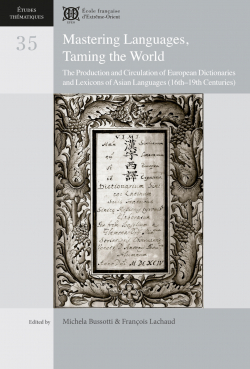
Mastering Languages, Taming the World
Michela BUSSOTTI, François LACHAUD, Dejanirah COUTO, Rui Manuel LOUREIRO, KISHIMOTO Emi, ŌSHIMA Mikio, Henning KLÖTER, Hans-Jörg DÖHLA, María Teresa GONZÁLEZ LINAJE, YANG Huiling, Mariarosaria GIANNINOTO, Eugenio MENEGON, Mårten SÖDERBLOM SAARELA, YOSHIKAWA Masayuki
40,00 €
2023
• Available
Études thématiques
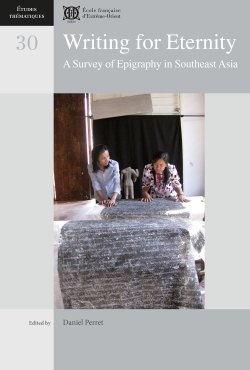
Writing for Eternity
Daniel PERRET, Claude GUILLOT, Ludvik KALUS, Philippe PAPIN, Claudine SALMON , Jacques P. LEIDER, Michel LORRILLARD, Arlo GRIFFITHS, Dominique SOUTIF, Julia ESTEVE, Peter SKILLING, Hadi SIDOMULYO, Tilman FRASCH, Kyaw Minn HTIN, Marek BUCHMANN, Christian BAUER, Titi Surti NASTITI, Roderick ORLINA
40,00 €
2018
• Available
Études thématiques
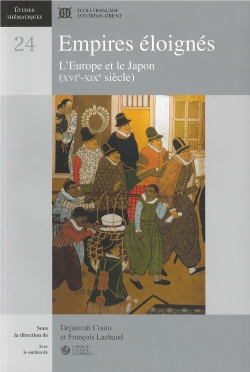
Empires éloignés. L'Europe et le Japon (XVIe-XIXe siècle)
Benoît JACQUET, François LACHAUD, Frédéric GIRARD, Dejanirah COUTO, Rui Manuel LOUREIRO, Jean-Noël ROBERT, José Miguel PINTO DOS SANTOS, TAKAHASHI Hiromi, João Paulo OLIVEIRA E COSTA, Juan GIL, Annick HORIUCHI, Michel WASSERMAN, Alexandra CURVELO, Nuno VASSALO E SILVA, Cynthia VIALLE, SUZUKI Hiroyuki
50,00 €
2010
• Available
